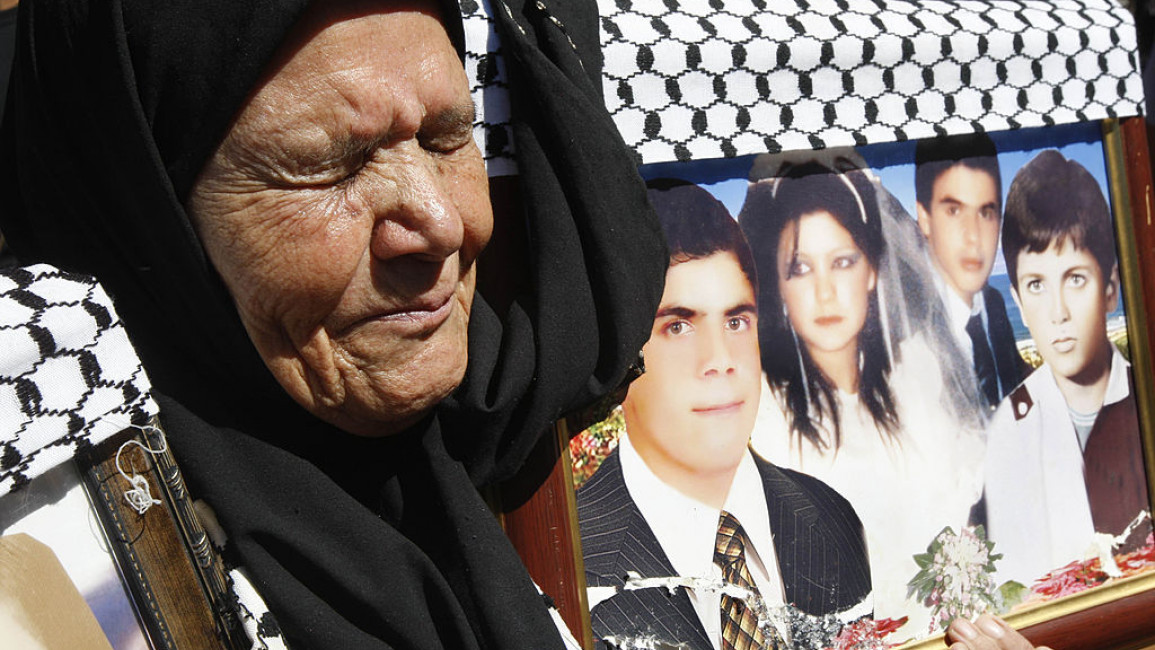
Sabra and Shatila massacre: 40 years of trauma
At a supermarket in Düsseldorf, Germany, a few years ago, a man approached a group of us and immediately asked: “Are you Palestinians?’
Assuming he heard us talking, we replied: “yes”.
Having learnt we were fresh out of Palestine, he assertively put his foot down and said: “It is a done deal, you’re coming to my house for maqlubeh,” a traditional Palestinian dish. And so we caved.
Munir came to Germany five years prior and was a Palestinian refugee from Lebanon, as well as holding refugee status in Germany. The irony went full circle when we met his wife, Norah, who was also a refugee from Iraq’s Kurdistan.
“We have two little readily-made refugees here” he added, pointing to his two little girls. “What can I say? Refugees gravitate toward each other, for misery loves company,” he joked.
And precisely because misery can be a bonding mechanism, it did not take us long to learn about Munir’s story. He had a twitch in his left hand, and it became particularly noticeable as he joyfully dished out maqlubeh for us.
''What the massacre highlighted, more than anything else, was the political complexity and vulnerability of the Palestinian presence in Arab countries, especially as refugees.''
The memories were the cause of the twitching, and those memories were trauma, and both were a continuation of a burdened identity.
Munir and his sister were the only survivors of his family in the Sabra and Shatila massacre in 1982. He was seven when he saw his parents along with several neighbours being escorted out of their homes by phalangist militiamen (al-kataeb) and then slaughtered with knives and bayonets.
Munir was an engaging storyteller and a top-grade entertainer. But like many Palestinians, trauma was always in the background of his stories, and of that he liked to talk and make fun, possibly as a coping mechanism.
“As we watched the slaughter from a distance, hiding behind an old shed that used to be a mechanic’s shop, I had kept my hand on my sister’s mouth, fearing she would scream and expose us. I wanted to be a man, to look after my little sister, to never show fear or even flinch. In reality, however, I did physically pee my pants,” he said and exploded in laughter.
After the massacre and with the arrival of the Red Cross into the Shatila refugee camp, Munir and his sister emerged. “I can still vividly remember how unbelievably hungry I was, then as I walked around the camp, the stench of stale blood killed every last shred of hunger in me,” he remarked.
Munir would eventually relocate to Ein el-Helweh to live with relatives.
“For years, I redacted all these memories in my head, effectively suppressed and self-censored them. My sister and I would talk about our parents’ passing, but without specifically mentioning the way they died.”
Munir’s story is that of hundreds who experienced the massacre, each with their own version of loss, and their way of dealing with the trauma.
Initially, the PLO defended Shatila and the adjacent neighbourhood of Sabra in West Beirut, along with other Palestinian refugee camps across Lebanon. As Israel deepened its invasion and destruction of the country, the PLO agreed to relocate to mainly Tunisia and Yemen. PLO officials were given American assurances that civilians left behind would be protected.
On 10 September, the US Marines withdrew from Lebanon, and four days later Lebanon’s president-elect and the leader of the Phalange, Bashir Gemayel, was assassinated. A close ally of Israel, Gemayel’s death saw Israel violate the fragile ceasefire and extend its occupation of West Beirut.
Two days later, 150 phalangist militiamen stormed the IDF-cordoned off Sabra and Shatila area. Traditionally a bitter enemy of the PLO and its Lebanese allies, the phalangists sought to draw blood driven by the erroneous belief that the Palestinians were responsible for Gemayel’s assassination.
They went on a killing frenzy for two days non-stop. The Israeli army surrounding the area was aware a massacre was afoot but did nothing to stop it. Instead, the soldiers fired flares into the night sky, allowed reinforcements to enter the area on the second day, and eventually provided bulldozers to bury the bodies in mass graves.
Then Israel’s defence minister, Ariel Sharon, denied the army knew of the atrocity, but the Israeli Kahan Commission appointed to investigate the massacre, found him to be “personally responsible.”
Even after forty years, the exact number of casualties remains undetermined. The Kahan Commission estimated that around 800 people were killed. British journalist Robert Fisk, who was among the first to arrive at the scene, put the number to 1700 casualties. In 1984, Israeli journalist Amnon Kapeliouk, found evidence that no fewer than 3000 Palestinians (and Lebanese) civilians were murdered.
For Munir, the scope of the massacre was much more than an appalling death toll. It represented another dark shadow, another episode, in the tragic Palestinian experience as a whole.
Through that particular lens, little emphasis did he put on Israel’s involvement in the killing. After all, albeit not elbow deep in the blood, the Israeli army was a facilitator; ergo, an accomplice. To him, Israel’s killing of Palestinians was more or less the norm.
What the massacre highlighted, more than anything else, was the political complexity and vulnerability of the Palestinian presence in Arab countries, especially as refugees.
The animosity between the phalangists and the PLO, and the PLO involvement in the Lebanese civil war, could not be separated from the overall regional scene. Palestinian statelessness and, inevitably, dependency on external funding and logistical support meant little independence in decision-making and the absence of an unencumbered geographical space to operate from.
This dictated whom Palestinians could or could not take as allies, sometimes at the expense of their struggle.
Palestinians still resisting 40 years on from Sabra and Shatila https://t.co/WpFbEQNNHf pic.twitter.com/uvf27IAjdh
— Ramzy Baroud (@RamzyBaroud) September 14, 2022
The prioritisation of Palestinian national goals, which sometimes came in the form of armed resistance, repeatedly put the PLO on a collision course with the regimes in countries where they resided. These states feared Israel’s retaliation on their soil and considered Palestinian revolutionism a destabilising element to their rule. Others sought to monopolise the Palestinian struggle for their own national agendas.
The pattern was seen in Jordan in 1970 during what became known as Black September; the War of Camps in Lebanon in 1985-88; and in 1990, Arafat’s support for Saddam Hussein’s invasion of Kuwait. Arafat feared the Iraqi dictator would crack down on Iraq’s Palestinians had he refused to declare support for him. What transpired was a mass expulsion of Palestinians from Kuwait and the Gulf States’ cutting off of funding to the PLO.
This regional calculus, encompassed by the broad context of Israel’s occupation, has paved the way for the Sabra and Shatila massacre. The same dynamics continue as a blocker for transitional justice for the victims today.
Munir said he was not expecting any justice, but had his fingers crossed that the establishment of an independent Palestinian state would be one way to achieve it.
“We will not be at the mercy of anyone, friends of foes,” he said as he poured us mint-flavoured tea.
Dr Emad Moussa is a researcher and writer who specialises in the politics and political psychology of Palestine/Israel.
Follow him on Twitter: @emadmoussa
Have questions or comments? Email us at: editorial-english@alaraby.co.uk
Opinions expressed in this article remain those of the author and do not necessarily represent those of The New Arab, its editorial board or staff.




